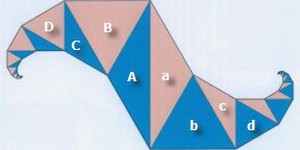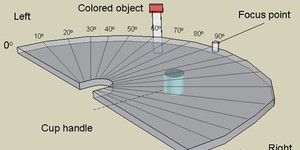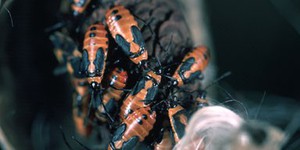Others Like “Shaping Your Thoughts?” (top 20 results)
|
Can you remember all of your ABC's? Computers need to "remember" letters too. Every time we use a computer to write a story, the computer needs to "remember" the letters in the story by saving them to the computer's memory as a file. In this experiment find out how much memory it takes for the computer to "remember" a series of letters.
Read more
What do you do if you take a photo and it turns out too dark or too bright? You can use your computer to fix it for you.
Read more
A siphon is a handy device for emptying out a liquid reservoir that has no drain. For example, they're great for cleaning fish tanks. An interesting aspect of a siphon in action is that the liquid flows "uphill" for a portion of its journey through the tube. This project asks the question, is there a maximum height for that uphill part of the siphon?
Read more
This is a great science fair project for someone who is interested in both mathematics and art. Spidrons are geometric forms made from alternating sequences of equilateral and isosceles (30°, 30°, 120°) triangles. Spidrons were discovered and named by Daniel Erdély in the early 1970's, and have since been studied by mathematicians and artists alike. This project is a great way to learn about the mathematics and art of tiling patterns.
Read more
This is a good first-time programming project. You'll learn how to use JavaScript to create a basic calculator program that you can run in your Web browser.
Read more
Peripheral vision is important in our everyday lives because it allows us to gather a visual sense of our surroundings—without it, we would see the world through "tunnel vision." The survival of our ancient ancestors depended on their ability to use peripheral vision to find prey and to avoid predators. Almost everything we do—from riding a bike, to dribbling a basketball, to reading a book—depends on peripheral vision. In this human biology science fair project, you will test…
Read more
The DNA in our cells contains our "blueprints," but it's the proteins in our cells that do most of the work. The Human Genome Project has allowed us to start reading the blueprints, but we still don't understand what most of the proteins do. This is a fairly advanced project that explores ways of identifying the function of unknown proteins.
Read more
Ever used a pair of molecular scissors? Restriction enzymes are molecular scissors that cut DNA into pieces. Find out which enzymes will cut, and where by making a restriction map. Then you can figure out what will happen if you change the sequence of the DNA. Will the same enzymes still cut the new DNA sequence?
Read more
This is a good first-time programming project. You'll learn how to use JavaScript to create a simple program to alphabetize lists of words. You'll be able to run your program in your Web browser.
Read more
Milkweed bugs, as their name suggests, have a close relationship with the milkweed plant. The plant produces an irritating, milky sap, and toxic compounds, but somehow the milkweed bug is unaffected by them. Instead, it concentrates chemicals from the sap in its body, acquiring an unsavory taste that, along with its bright coloration, protects it from predators. Given this close relationship, will the milkweed bug exhibit a color preference for egg-laying sites? This project is designed to find…
Read more
|
Explore Our Science Videos
Raspberry Pi Adaptive Game Controller
How Much Weight Can Boats Float?
DIY Mini Drone Part 1: Build Your Drone










